The early 20th century saw a boom in cinemas in towns including Newport with many popping up showing newsreels, silent films, current affairs, science and nature and sport. The 1909 Cinematograph Act brought cinemas under the control of local authorities and there was increase in the number of theatres appearing.
In the early 1910s, Newport residents could visit the Gem cinema in Pill, the Rialto Electric Theatre on High Street/Station Approach, the Olympia on Skinner Street, The Coliseum, Clarence Place and Davis' Pictorial Entertainment on Stow Hill which later became the Tredegar Hall Picture Theatre.
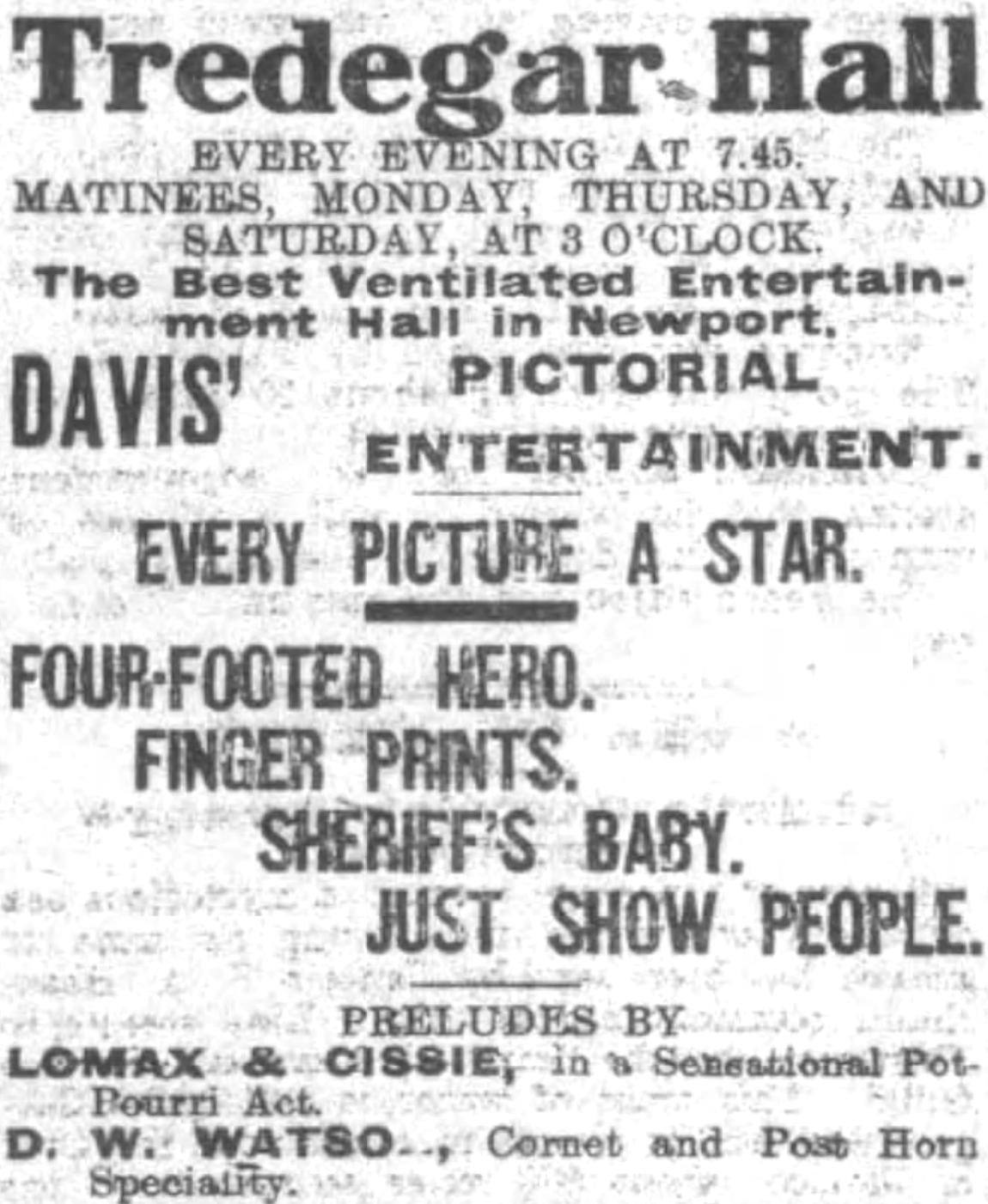





On a day in 1913 you could choose from 6 different cinemas in Newport.
In 1913 on a given night you could choose from 6 different cinemas, one of which was the Newport Picturedrome.
A Short History
The Picturedrome was a relatively short-lived venture only being open for just under three years between 1911 and 1914. The earliest mention that I could find was on the 8th December, 1910 when a music and dancing license was submitted on behalf of a Mr J.B. Howard of Fleet Street, London. The application proposed to convert 34 Commercial Street into a cinematograph theatre and Mr Howard was said to be the lessee of a similar theatre in Crystal Palace.
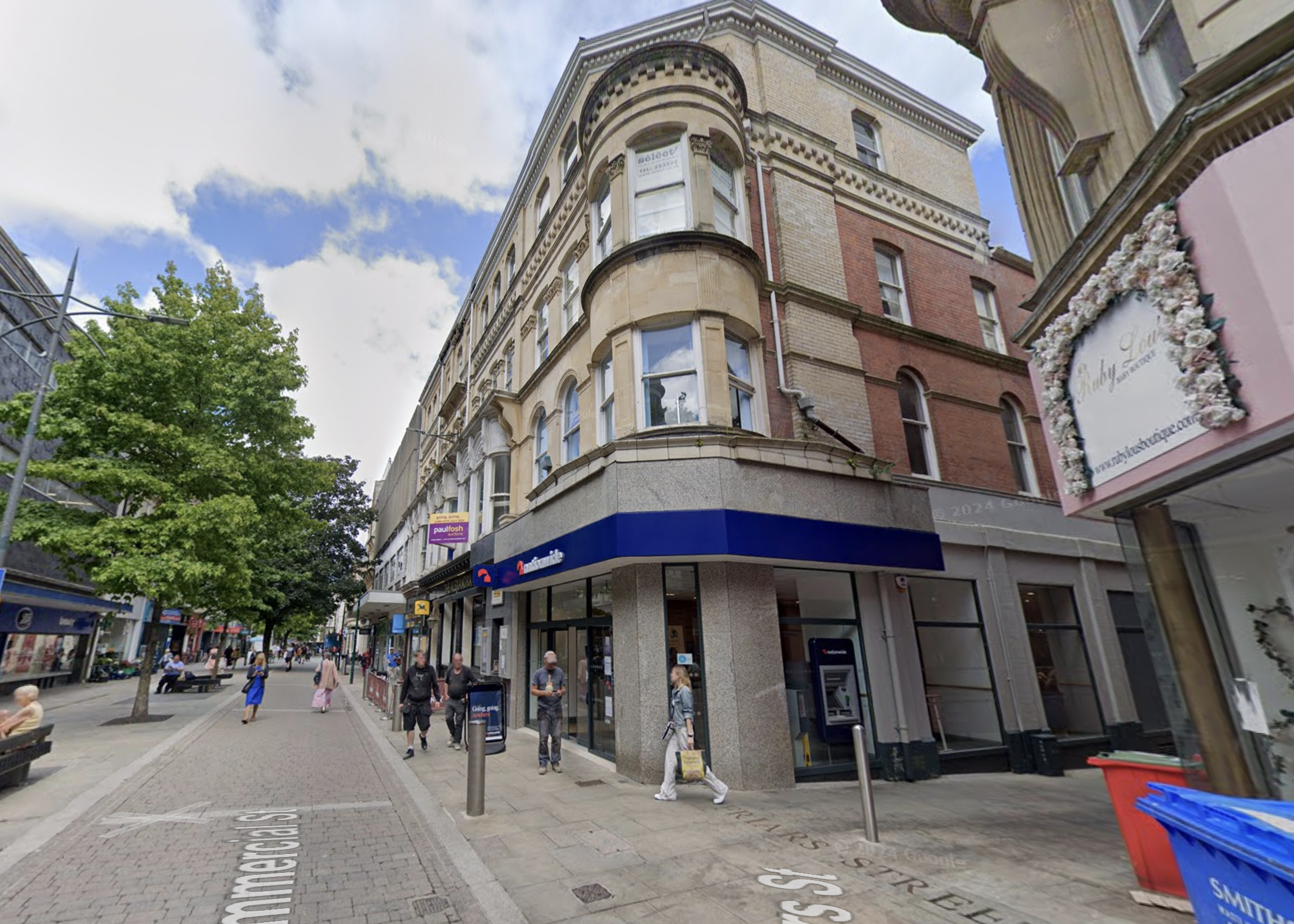
The application stated the the building would take about two months to convert and based on that the magistrates adjourned the license so that it could be made once the conversion had been completed. Interestingly, an application was also made during the same session for the Rialto on 56 High Street which was granted subject to the approval of the borough engineer (it was fully approved in 1911).
Prior to it becoming the Picturedrome, 34 Commercial Street appears to have been empty being available for let between the entirety of 1892—1894 before ‘The World’s Greatest Bazaar Company’ opened in late 1895. Over 50,000 articles were for sale including glass dishes, teapots, flower pots and ‘brushes of every description’.

By 1896 the building was occupied by W Pritchard and Co., Fancy Drapers with rooms above for lodgers (at least in 1909 lodgers were present). In March 1910, Pritchards filed for bankruptcy and the building was up for sale with the contents being auctioned in July of that year.
Presumably the building lay empty until the license application is submitted to convert it into a cinema.
The Building
On the 5th May, 1911, a long article was published by the South Wales Argus in which Mr Howard was interviewed about the new cinema.
He spoke about his plans for the new cinema and his vision stood apart from the typical picture houses of the period. Early cinemas were often improvised affairs with poor ventilation and a very real risk of fire, since the film stock used at the time was made of highly flammable nitrate. Howard promised something altogether different: a purpose-built, fireproof theatre that would combine comfort, education, and the latest technology. The building was to feature cushioned tip-up seats, filtered air heating, coloured electric lighting and even an oak-panelled lounge serving complimentary tea and biscuits. He presented the cinematograph as a civilising influence, claiming that children could learn more from travel films than from books, and that cinema could uplift as well as entertain. His plans suggest not just a new entertainment venue for Newport, but an attempt to redefine what cinema itself could be—safe, respectable and modern, at a time when moving pictures were still finding their place in public life.
Here’s the interview in full.
The Pitch
“I have devoted a good deal of attention to cinematograph shows during the last two or three years,” said Mr Howard, “and I am convinced of their continued popularity. I saw the cinematograph in Paris ten years ago, when it was practically unknown in England. You see, there are immense possibilities in it — from the educational as well as from the entertaining point of view. Parents and schoolmasters recognise that it does the young mind good to see pictures illustrating actual life scenes in other countries, and the possibility is that children learn more from such pictures than from books of travel and the like. It is my intention not only to cater for the public in general, but always to include subjects in my programme which will be of educational value to the children.”
The Building
“The theatre is being put up on the latest London principles. It will be of Romanesque design, supported upon richly carved columns, and these in turn will support frieze arches. In the front will be a mosaic pavement, and an imposing marble staircase will lead up tot he lounge. There will also be a handsome vestibule. Steelolite decorations will be on the walls and ceilings, and these, in addition to being handsome, will render the building absolutely fireproof. The floors will be laid with thick cork lino, which will be not only warm to the feet but will keep the place clean, and will not catch fire if lighted matches happen to be thrown upon it.
“The comfort of the audience will be studied in every way, and every seat will be of the tip-up variety, and nicely cushioned. The screen will be a large one, and no less than three exits have been provided into Friar-street. Indeed, the architect estimates that the whole building can be emptied in less than half a minute.
“Underneath the theatre a plant, comprising quite the latest and most up-to-date thing in the way of heating apparatus, has been put down. This apparatus produces forced air at any temperature — it can be made cold in summer and hot in winter. In connection with electric features this is quite a new system of hearing, and all the air will be filtered and purified before being sent into the building.
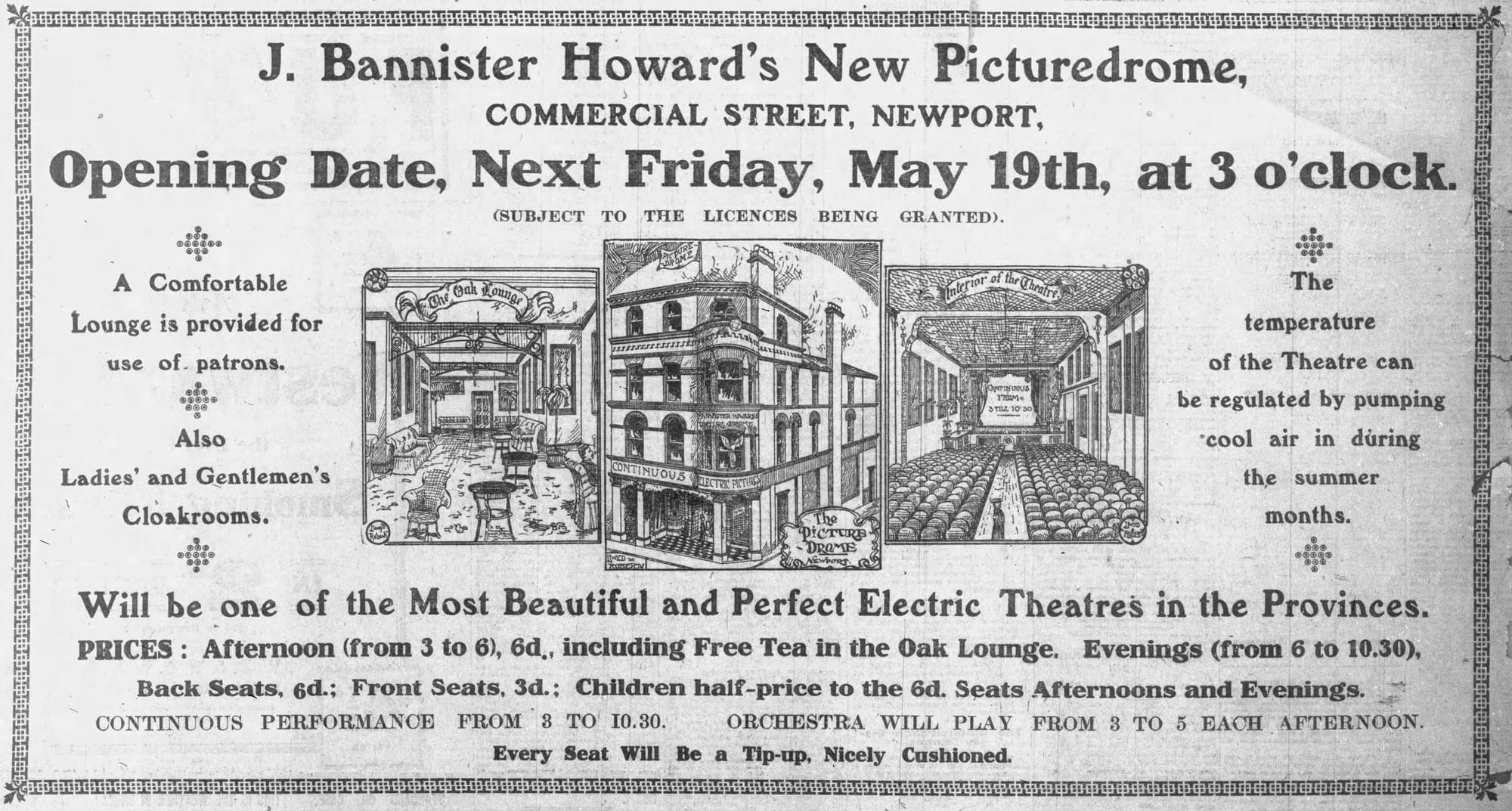
“It also is my intention to fit up a very handsome lounge, to be known as the oak lounge, and the whole of the decorations of this will be carried out in oak. Mr P. E. Gane, Commercial-street, is carrying out the decoration and furnishing of the oak lounge.
“In the afternoons, between the hours of 3pm and 6pm, free cups of tea and biscuits will be served in the lounge, and every patron will have a fresh cup of tea made for him.
“Writing materials and all the latest periodicals will also be provided in the lounge. Then, again, I am introducing a special band room, in which a band will play between 3pm and 5pm each day, and the music will be quite distinctly heard in the theatre and the lounge.
“The performance will be what is known as a continuous one, commencing daily at 3pm, and proceeding without interruption right on until about 10.30pm. This kind of performance has been much appreciated generally, and, of course, it has this advantage, that a visitor to the theatre can enter at any time, and leave after seeing the whole of the programme. In other words, there are no fettering restrictions. We shall run between 4,000 and 5,000 feet of film, which , in the ordinary way, will take about an hour and a half.
“The prices will be most moderate. In the afternoon, between 3pm and 6pm, sixpence will be charged to any seat in the building (children being admitted at half-price), and from six o’clock onwards threepence will be charged for the front seats, and sixpence for the back seats. At first glance this might appear to be rather out of the usual order of things, but the change will be understood when the fact is added that a better view can be obtained from the back seats.
“A special study has been made of the make of the theatre, in order that those sitting in any part of the building might have a clear and perfectly uninterrupted view of the screen, and this difficulty has been got over so well that even if ladies keep their hats on they will not interfere wit the view of those sitting behind. The building will accommodate just over 400 people, and the work has been carried out by Mr J.G. Partridge, builder, Newport. All the labour employed has been local.
“The architect is Mr H. Bennett of Bristol which is a specialist in designing cinematograph theatres. The front of the theatre will be illuminated by about 500 electric lamps, and the Veneer electric signs will be used. Surrounding the building will be a mercurial blue electric arc lamp of 2,500 candle power — the first of its kind in Newport. The interior will be illuminated by coloured lamps, ranging from 30 to 100 candle power each. I might add that Mr Herbert St John, who has been with me for many years, and who is now managing my Bath theatre, will be the resident business manager, and he has, of course, considerable experience of the work”
License Granted and Opening
With the building completed, the license for music and dancing was submitted again in May 1911 for a venue to be known as the Picturedrome. The building had been fitted with precautions against fire and to aid evacuation. Based on these measure the magistrates were perfectly satisfied and the license was granted.
On Thursday 18th May, 1911, the cinema was opened to a select few, but a varied select few. According to the Argus, ‘Church and State, the law and “the profits”, medicine and commerce, youth and beauty, men, women, and children, flocked to see the pictures, but even more to inspect the handsome new house’.

A number of films were shown labelled “dramatic,” “comic,” and “educational” and throughout the evening there was a large audience in which ladies predominated.
The article went on to describe the Oak Lounge in detail.
P.H. Gane Ltd., house furnishers, have been responsible for the decoration and fitting of the lounge (appropriately termed the oak lounge), and the effect is such as to enhance — if that is possible — their already unrivalled reputation as artistic furnishers, thoroughly conversant with the requirements of their clients whatever their needs may be. A mere printed description must fail to give an adequate idea of this delightful room. To use a hackneyed phrase, “it must be seen to be appreciated.”
The prevailing tones are soft browns and greens, the walls being panelled in the former colour, with a framing of oak surrounded by the green shade. The wall decorations are of art oak canvas. Overhead there are ornamental arches, and oak beams, with a paper in relief in oak shades. The floor is covered with a very handsome pile carpet in two shades of brown, the darker shade matching the panels on the walls. This carpet forms an exquisite background for the handsome oak furniture placed upon it.

Luxurious settees and chairs upholstered in suitable colours, lounge chairs in cane, oak tables and smaller chairs, seated in which the patrons of the theatre may sip afternoon tea, write letters or scan the magazines, all lend an air of luxury combined with refined taste, too seldom displayed. Prettily draped windows, charming flowers on stands and handsome door curtains complete a room which is bound to become a centre of attraction.
The cinema was fully opened to the public the following day on Friday 19th May.
What Was Playing?
The adverts below give an idea of the range of films that were being showing at the Picturedrome.


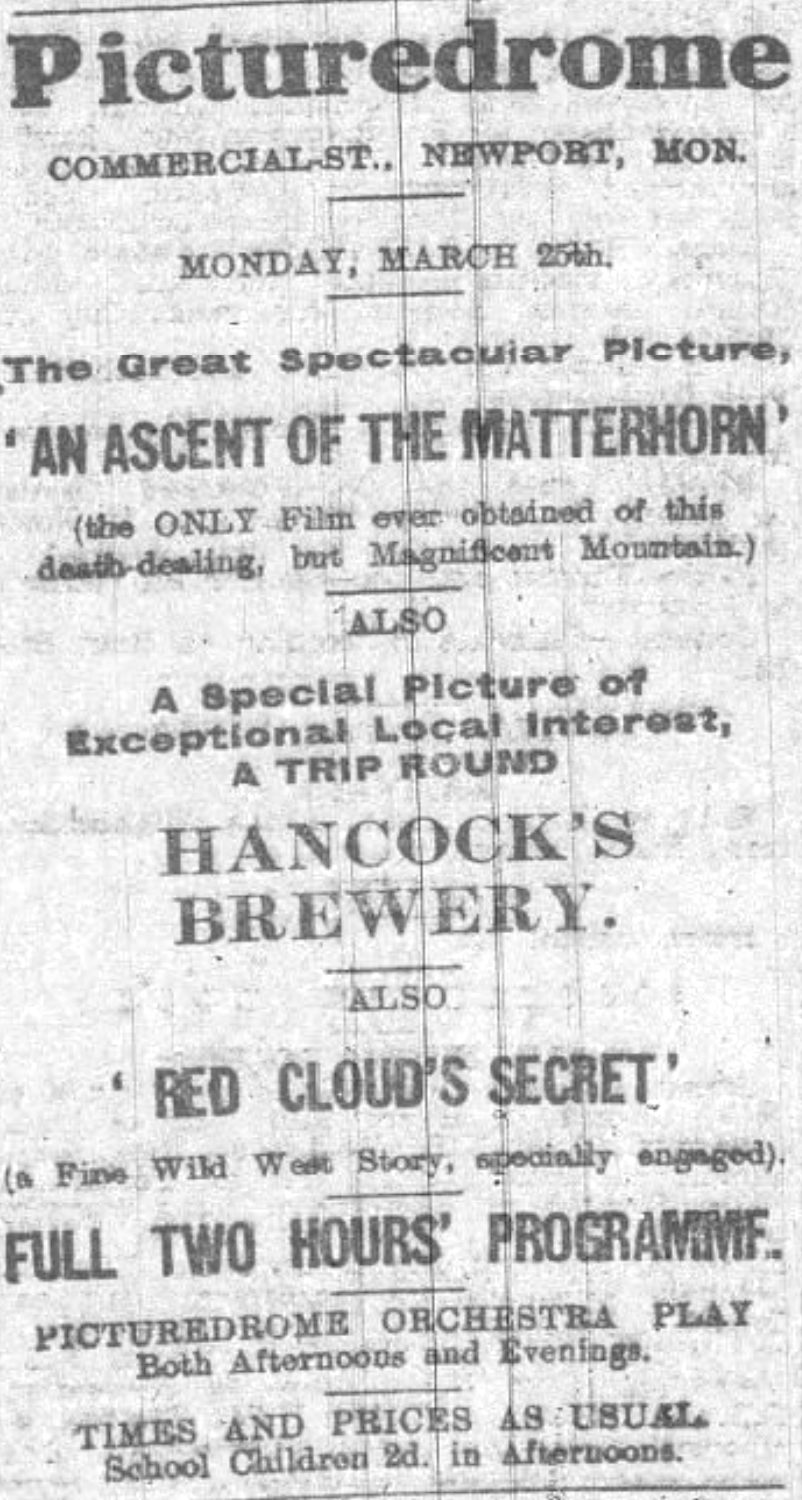
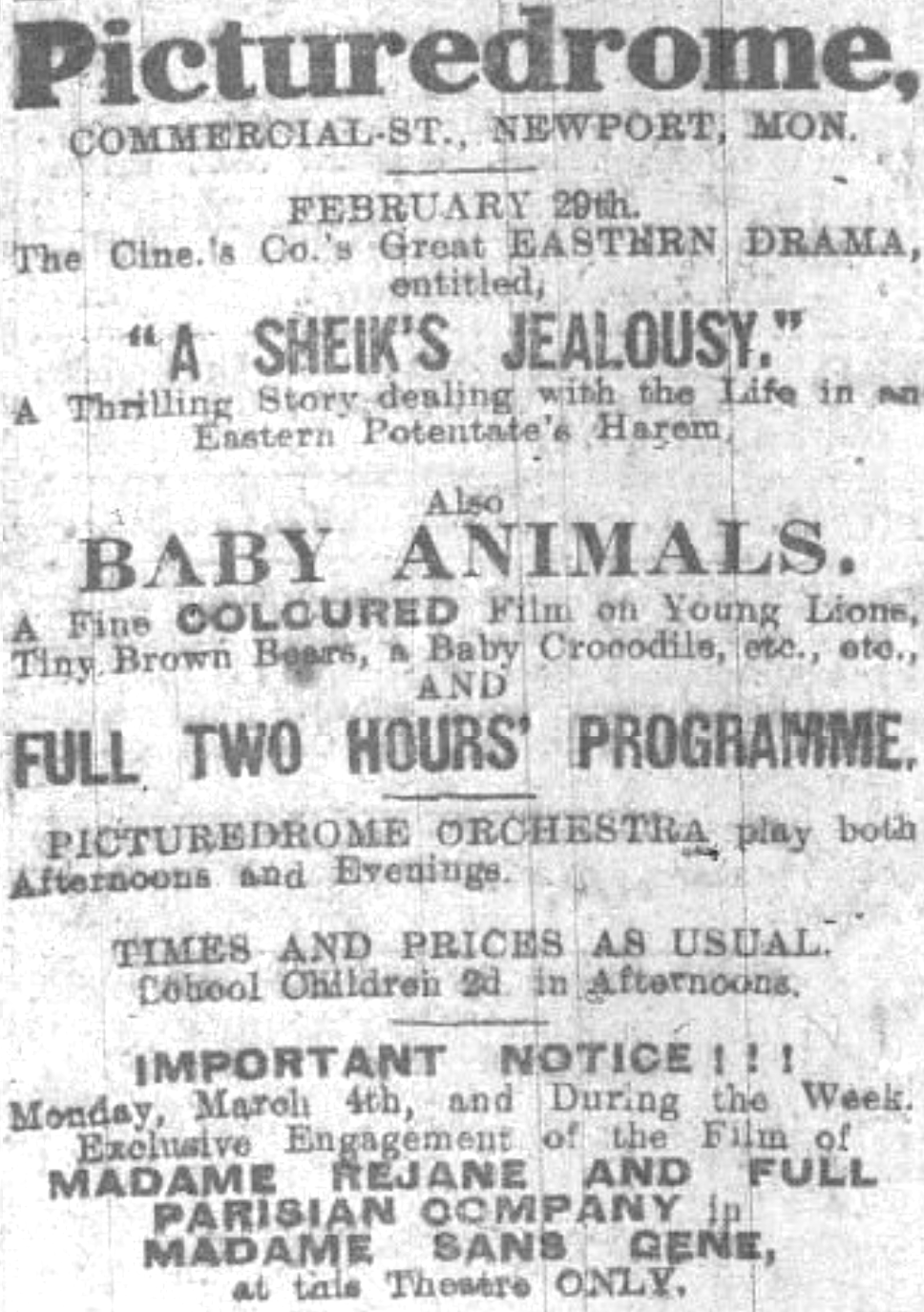

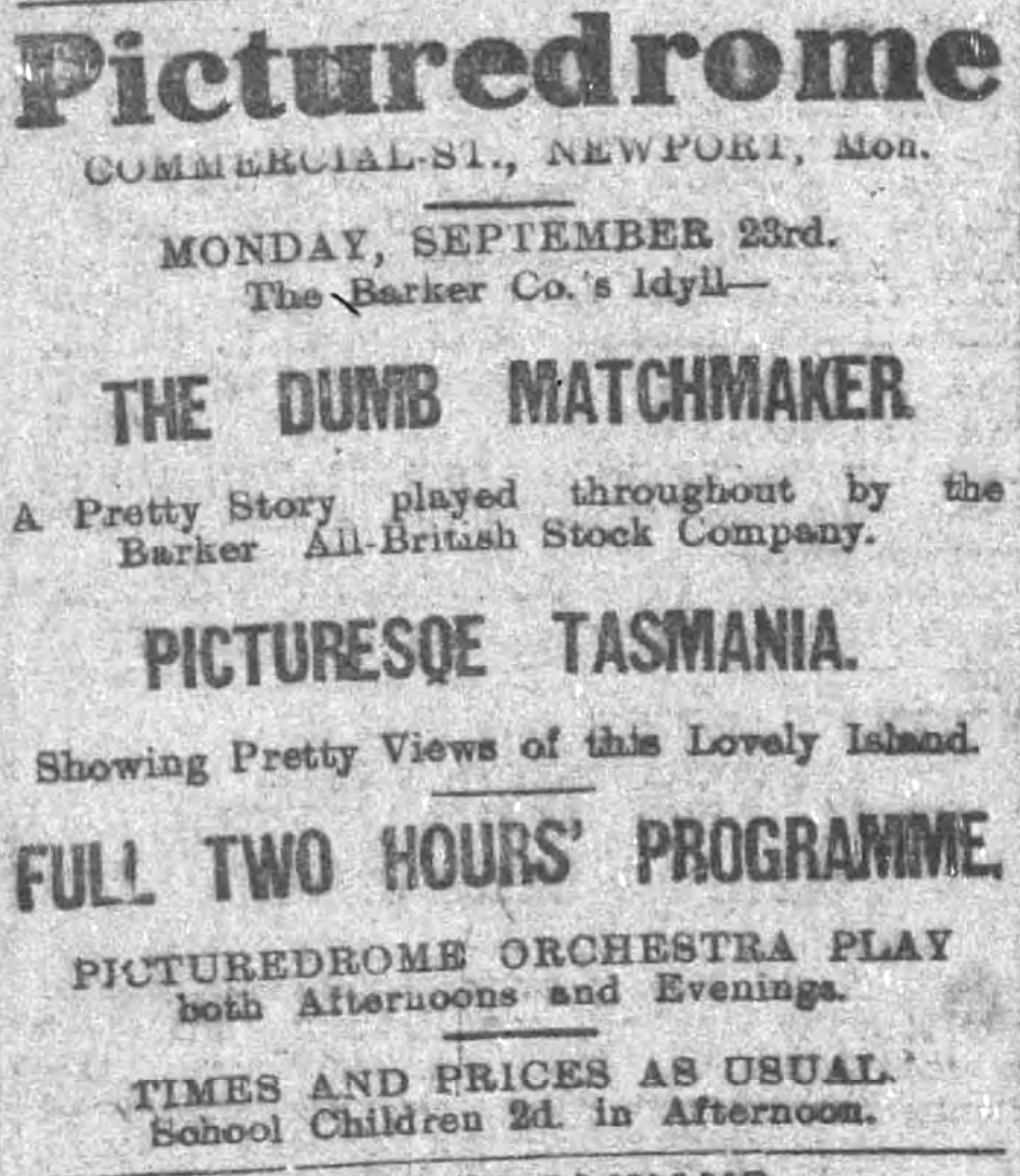
The Beetles
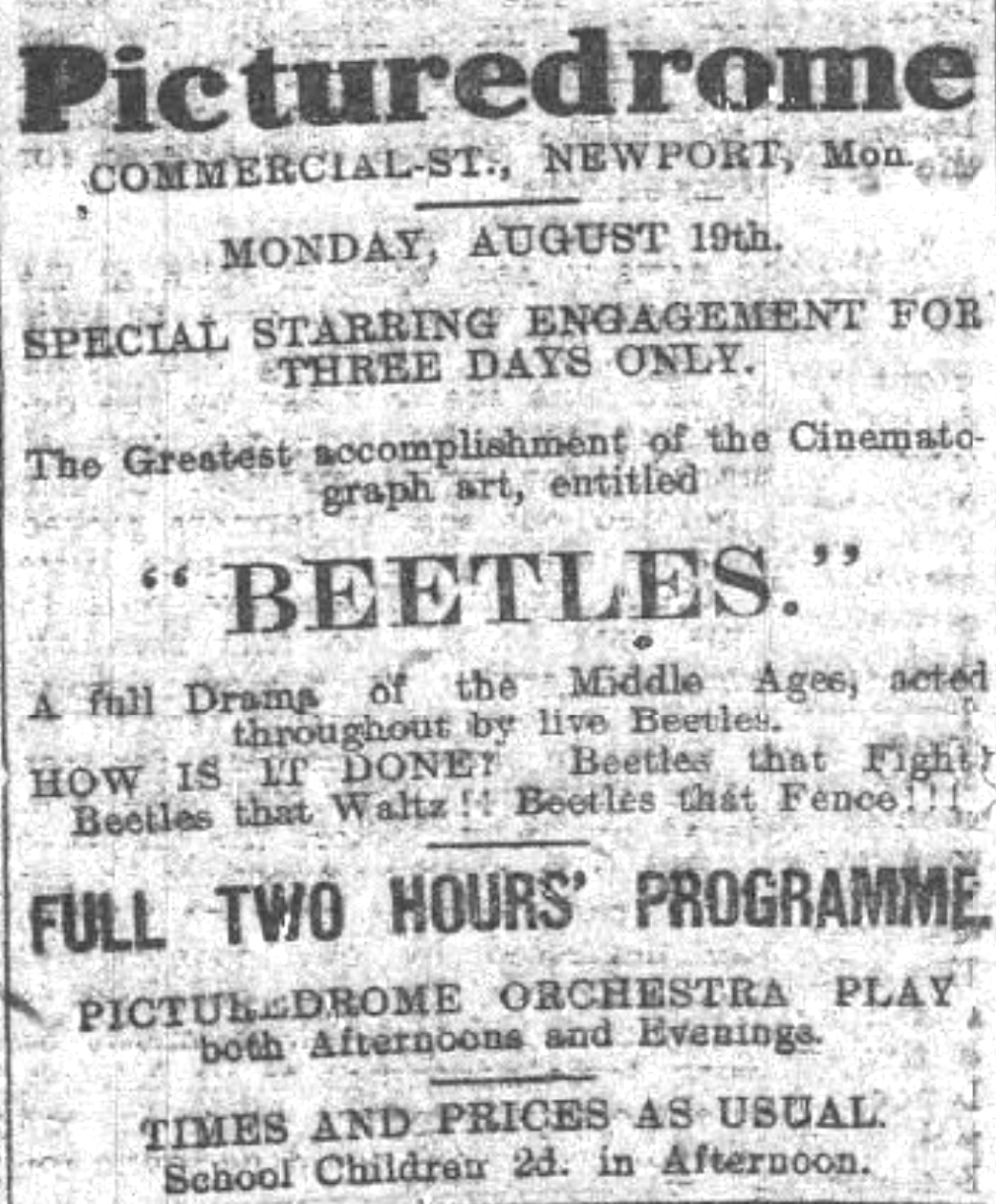
A film shown in 1912 was The Cameraman's Revenge, where a beetle named Mr. Beetle has an affair with a dragonfly dancer after getting bored with his wife. He is secretly filmed by a grasshopper, who is the dragonfly's ex-boyfriend and a cameraman. When Mr. Beetle discovers the film at a cinema, he and his wife are both dismayed, leading to their arrest. The film is known for its stop-motion animation of insects and its meta-commentary on cinema, with the cameraman/grasshopper also serving as the movie's projectionist.
Watch the full film below.
The End of the Picturedrome

On Easter Monday 13th April, 1914, the Picturedrome was advertising a full bill in the Argus but within a couple of days the manager Oswald Russell had relinquished his role and was looking for a new job. He had stated a change of tenancy although I can't find the reason for why it changed.


An advert on the 20th April mentioned that the Picturedrome had changed to the 'Gaiety'.

There's no mention of the Gaiety running until an advert was posted in September announcing the grand re-opening under the ownership of a sportsmen from Cardiff called Howard Marks.

The Gaiety Picturedrome was short-lived and due to the owner of the building, Alderman J Liscombe, passing away in November 1914, 33 and 34 Commercial Street passed into the hands of the trustees in February 1915. The property then began to be used for a variety of purposes such as the Prudential in 1922 and Wildings.


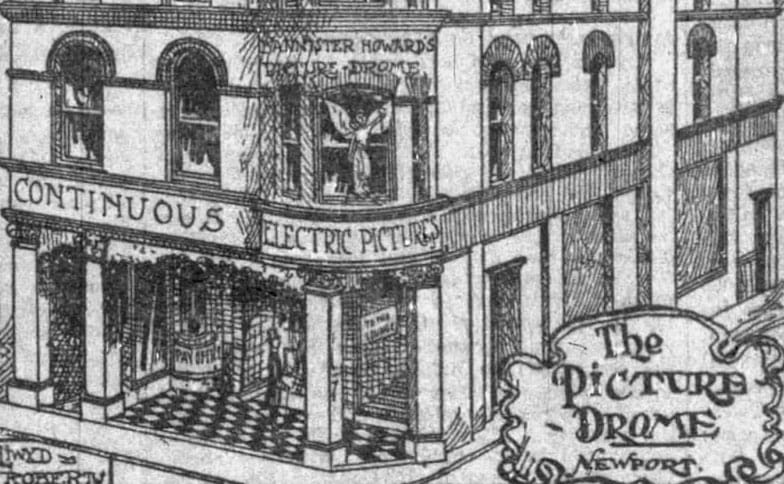
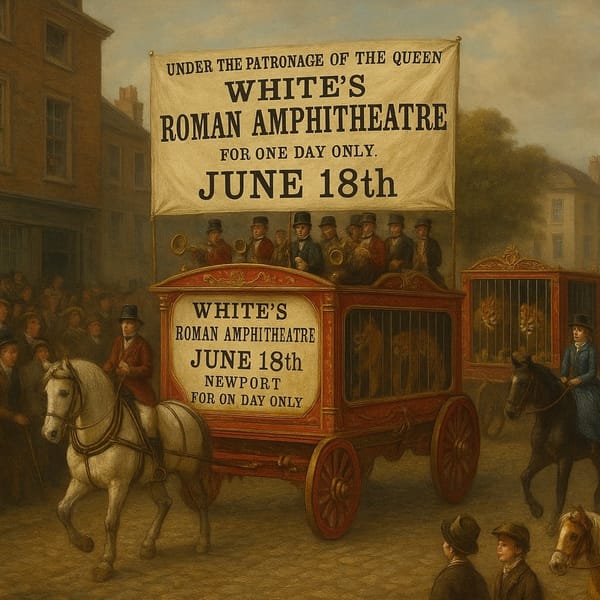

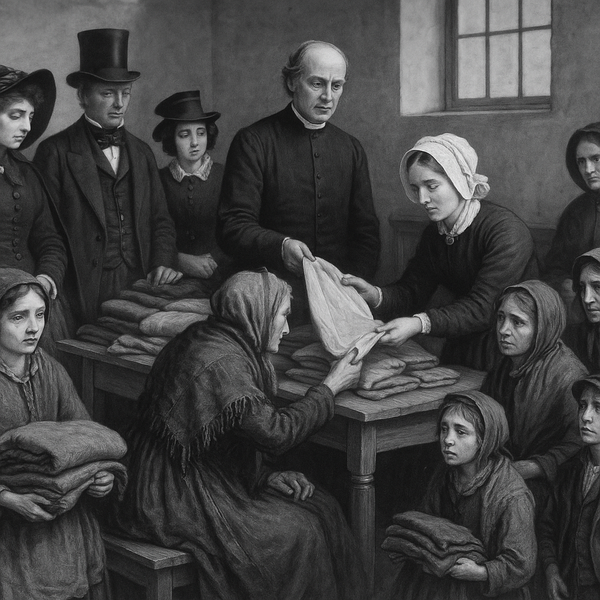


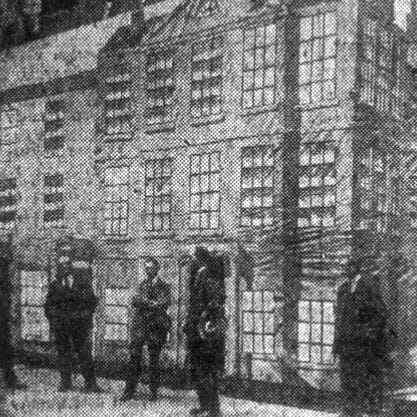
Member discussion